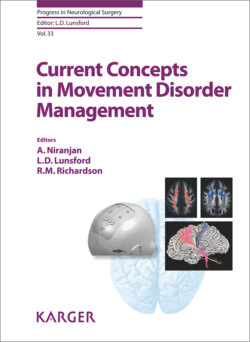Читать книгу Current Concepts in Movement Disorder Management - Группа авторов - Страница 67
Levodopa/Carbidopa Intestinal Gel
ОглавлениеDuodopa® is a gel combination of levodopa (20 mg/mL) and carbidopa (5 mg/mL) delivered via a portable pump directly into the duodenum through a percutaneous, endoscopic gastrostomy [14]. A number of studies have shown a significant reduction of “off” time and an increase of “on” time, along with a reduction of dyskinesia. The infusion is usually used for 16 h and the nighttime is covered with controlled-release levodopa formulation. Many nonmotor symptoms such as urinary and sleep issues have also been reported to improve with this form of treatment. Adverse events are mainly related to the device and include dislocation, obstruction, and breakage of the duodenal catheter, stoma inflammation and in rare cases, peritonitis. Duodopa® is currently considered a good option in patients not fit for surgery.
Finally, amantadine (100–300 mg/day) is frequently used to better control levodopa-induced dyskinesia; however, long-term use in advanced PD is limited by adverse effects, such as confusion, hallucination, and skin rash [7, 8].
Stereotactic surgery is typically considered in patients with moderate-to-severe PD. The ideal patient is severely disabled in the “off” state but regains considerable functionality with levodopa. In other words, in levodopa-responsive patient, the response fluctuates and is marked by severe dyskinesias that cannot be managed with medication adjustments [15]. Further details of patient selection, indications, and contraindications are the main topics of another chapter in this issue of Controversies in Movement Disorders.
